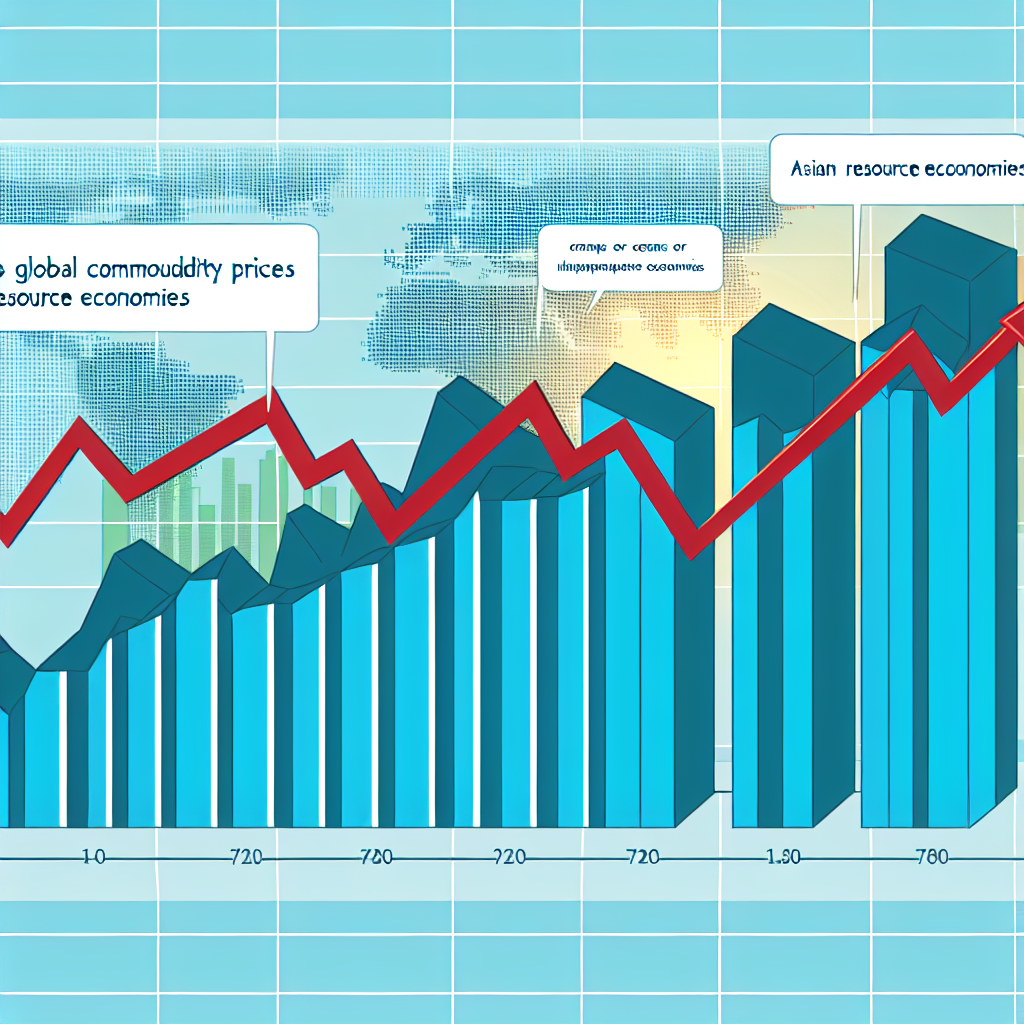# Global Commodity Price Fluctuations: Impacts on Asian Resource Economies
**Meta Description:** Discover how global commodity price fluctuations affect Asian resource economies, influencing trade, investment, and economic stability.
## Introduction
Did you know that in 2022, the price of crude oil surged by over 60% compared to the previous year? This dramatic shift in commodity prices has significant implications for Asian resource economies, which heavily rely on exports of natural resources. As global markets become increasingly volatile, understanding the impacts of these fluctuations is crucial for policymakers, businesses, and investors alike.
In this article, we will explore the effects of global commodity price fluctuations on Asian economies, focusing on trade dynamics, investment patterns, and economic stability. Readers will gain insights into how these price changes influence local markets, the strategies resource-dependent countries can adopt, and the potential long-term consequences for economic growth.
## The Importance of Commodities in Asia
### Key Commodities and Their Role
Asian economies are major players in the global commodity market, with countries like China, India, and Indonesia being significant producers and consumers. Key commodities include:
– **Oil and Gas:** Vital for energy security and economic growth.
– **Metals:** Essential for manufacturing and technology sectors.
– **Agricultural Products:** Crucial for food security and export revenues.
### Economic Dependency on Commodities
Many Asian countries depend heavily on commodity exports. For instance, Indonesia’s economy is significantly influenced by palm oil and coal exports, while Malaysia relies on rubber and tin. This dependency makes them vulnerable to price fluctuations, which can lead to economic instability.
## The Impact of Price Fluctuations
### Trade Dynamics
#### Export and Import Challenges
When global commodity prices rise, exporting countries often benefit from increased revenues. However, this can lead to trade imbalances. For example:
– **Increased Export Revenues:** Countries like Saudi Arabia see a boost in GDP.
– **Higher Import Costs:** Resource-poor nations like Japan face rising costs for essential goods.
#### Case Study: Indonesia’s Palm Oil Exports
In 2021, Indonesia experienced a surge in palm oil prices, leading to increased export revenues. However, this also resulted in domestic inflation, affecting local consumers. The government had to balance export benefits with domestic price stability.
### Investment Patterns
#### Foreign Direct Investment (FDI)
Commodity price fluctuations can significantly influence FDI in resource-rich Asian countries. High prices often attract more investment, while low prices can deter it.
– **Positive Impact:** Increased investment in mining and energy sectors during price booms.
– **Negative Impact:** Reduced exploration and production during downturns.
#### Example: Mining Sector in Mongolia
Mongolia’s mining sector saw a surge in FDI during the commodity boom of 2010-2014. However, as prices fell, many projects were put on hold, highlighting the cyclical nature of investment in resource economies.
### Economic Stability and Growth
#### Inflation and Currency Fluctuations
Commodity price volatility can lead to inflationary pressures and currency fluctuations, impacting overall economic stability.
– **Inflation Risks:** Rising commodity prices can lead to increased costs of living.
– **Currency Depreciation:** Countries may experience currency depreciation during commodity downturns.
#### Long-term Economic Consequences
Sustained low commodity prices can lead to economic contraction, job losses, and reduced public spending. For instance, countries like Venezuela have faced severe economic crises due to prolonged drops in oil prices.
## Visual & Engagement Elements
### Suggested Images
1. **Image of Commodity Trading Floor** – *Alt text: Commodity trading floor showcasing price fluctuations.*
2. **Graph of Oil Prices Over Time** – *Alt text: Historical oil price trends illustrating volatility.*
3. **Map of Asia’s Key Commodity Producers** – *Alt text: Map highlighting major commodity-producing countries in Asia.*
### Data Visualization Concept
**Infographic:** A visual representation of the relationship between commodity prices and economic indicators (GDP growth, inflation rates) in key Asian economies.
### FAQ Section
**Q1: How do commodity price fluctuations affect everyday consumers?**
A1: Rising commodity prices can lead to higher costs for goods and services, impacting household budgets.
**Q2: What strategies can resource-dependent countries adopt to mitigate risks?**
A2: Diversifying the economy, building strategic reserves, and implementing fiscal policies can help manage risks.
**Q3: Are there any long-term trends in commodity prices?**
A3: Yes, trends can be influenced by global demand, technological advancements, and geopolitical factors.
**Q4: How do fluctuations in commodity prices affect investment decisions?**
A4: Investors often reassess risks and opportunities based on price trends, leading to shifts in capital allocation.
**Q5: What role do governments play in stabilizing commodity markets?**
A5: Governments can implement policies to stabilize prices, such as subsidies or strategic reserves.
### Downloadable Resource
**Resource Suggestion:** A comprehensive guide on “Navigating Commodity Price Volatility: Strategies for Asian Economies” available for download.
## Conclusion & Call-to-Action
In summary, global commodity price fluctuations have profound impacts on Asian resource economies, influencing trade dynamics, investment patterns, and overall economic stability. As these economies navigate the complexities of a volatile market, understanding these dynamics becomes essential for sustainable growth.
**Call-to-Action:** Join the conversation! How do you think Asian economies can better prepare for commodity price fluctuations? Share your thoughts in the comments below.
—
**Internal Links Suggestions:**
– “Understanding Economic Dependency on Commodities”
– “Strategies for Diversifying Resource Economies”
**External Links:**
– [World Bank on Commodity Prices](https://www.worldbank.org/en/research)
– [International Monetary Fund on Economic Stability](https://www.imf.org/en/Publications/WP/Issues/2020/01/31/Commodity-Price-Volatility-and-Economic-Performance-49356)
**Schema Markup Suggestion:** Article schema to enhance search visibility and indexing.






